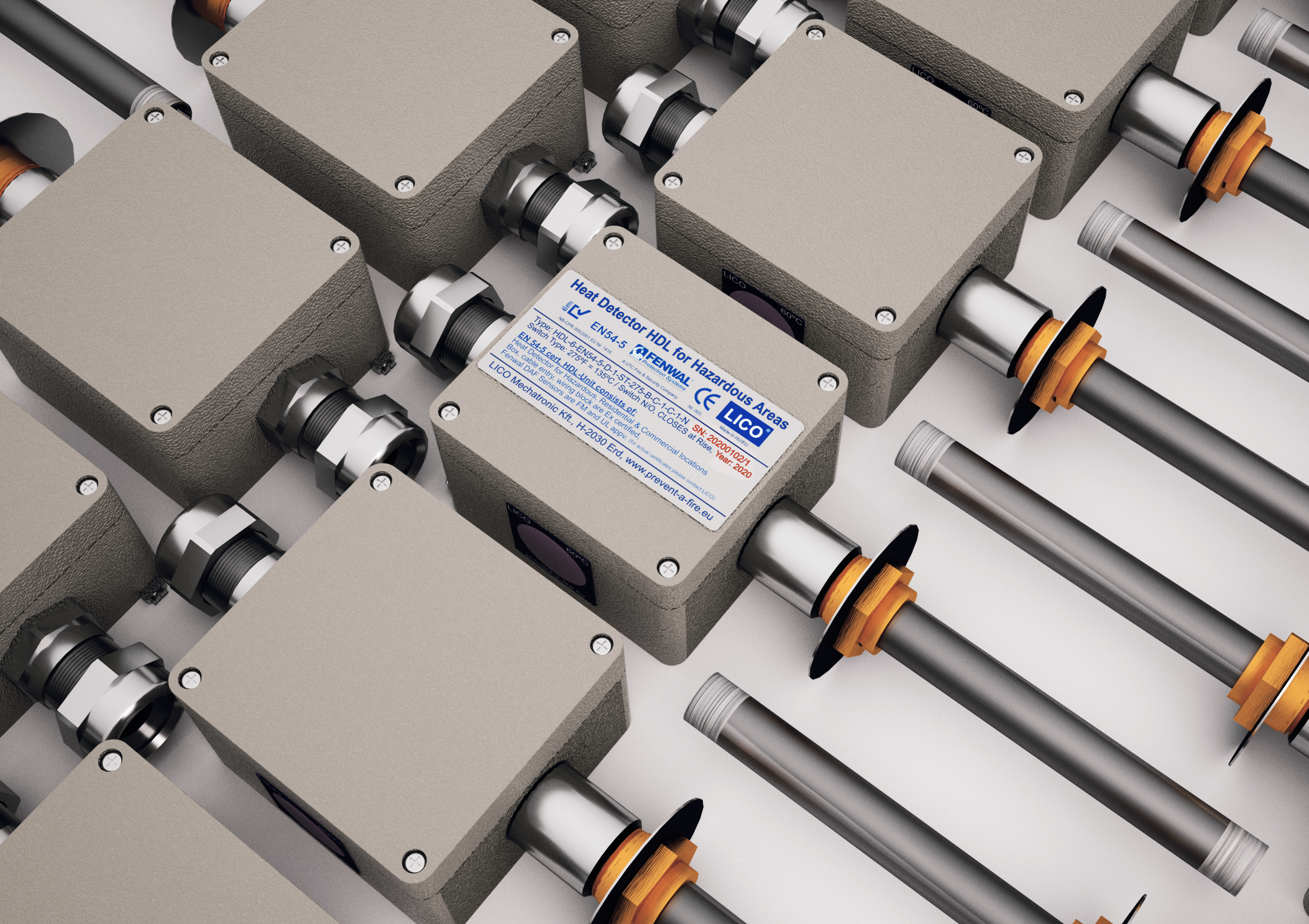Opportunities by vertical application sector
 Frost & Sullivan is a global growth consulting company that partners with clients to support the development of innovative growth strategies.
Frost & Sullivan is a global growth consulting company that partners with clients to support the development of innovative growth strategies.
For more than 40 years, the company has leveraged its comprehensive market expertise to offer industry research and market strategies, provide growth consulting and corporate training, and support clients to help grow their businesses.
We are pleased to bring you the very latest figures in our sector for the European Fire and Safety market. We are sure that this information will inform your business decisions.
Executive summary – research scope
This research service covers the European fire detection and suppression markets. Focusing on the key application areas, this research service offers an overview of the market trends, growth forecasts, geographic trends and company market shares, as
well as market forecasts by each of the major application segments into which fire and safety solutions are sold.
The geographical scope for this study is Western Europe, including Germany, United Kingdom and Republic of Ireland (UK & RoI), France, Italy, Iberia, (Spain and Portugal), Benelux (Belgium, Netherlands and the Luxemburg), Scandinavia (Denmark, Finland, Norway and Sweden) and the Rest of Europe (Austria, Switzerland and Greece).
Fire Detection
Fire detection systems are installed as part of buildings to detect combustion or any unwanted presence of fire. There are various types of fire detection systems each suited to different applications or building types.
A fire detection system can vary significantly in both complexity and price, from a single panel with a detector and sounder in a
small commercial property to a complex addressable system in
a multi-occupancy building.
Fire Suppression
Fire suppression systems are fixed installations that are activated
to suppress a fire. They can be activated manually, but are most commonly activated automatically. Only installations to fixed structures fall within the scope of the forecasts including commercial buildings, oil rigs, chemical plants, and other industrial manufacturing processes.
Methodology
This Market Analysis is a strategic review of the Fire Protection Equipment market in Europe and follows the principle of Frost & Sullivan’s Market Engineering Research methodology.
This is a measurement-based system of market measurement, analysis, forecasting, strategy development and monitoring.
The full research cycle is outlined in the chart below.
Our approach is designed to fully integrate market research, goal
setting, strategic marketing, market planning, implementation,
and monitoring as integral components of the marketing
process with our clients.
This study is specifically based on comprehensive interviews with the top level management of equipment manufacturers including international and local sales offices. In additional extensive secondary research on legislative and political trends has been conducted to support the analysis.
Market engineering research methodology

Summmmary of key findings
Vertical Focus
The European fire protection market is a conservative but large market with limited growth opportunities. To stimulate new demand and exploit opportunities that exist within various vertical applications, market participants are increasing their vertical focus, offering products and expertise specific to end-user applications.
Economic crisis
More directly linked to new construction and suffering from a lack of clear legislation, the fire suppression market was more severely hit by the recession of 2009 than the fire detection market, which held up well due to backlog form strong orders in past years and clear legislative drivers.
Both markets will return to steady growth from 2011, ensuring the return of the total fire protection market to pre-crisis levels by 2013.
Growth opportunities
End-user markets were hit by the economic crisis to a different extent. While education and healthcare remained unaffected, other verticals, including industrial and offices, were significantly impacted. Long term growth in the European fire protection market will remain conservative across all end-user segments. However, growth opportunities exist for specific applications and/ or specific geographies.
Education and healthcare
Education and healthcare offer the most stable growth opportunities. Partly bolstered by government stimulus packages, demand from these sectors will continue to grow throughout the forecast period driven by further new construction and refurbishment projects.
In addition, an anticipated trend towards stricter legislation for some
applications is also expected to support further growth in these segments.
Retail, etc.
Retail is the second largest sector in the European fire protection market. Following a significant dip in 2009/10, the underlying trend towards construction of further shopping centres and new supermarkets replacing smaller retail outlets will generate further demand for high-end fire protection solutions. For most other sectors too, positive growth rates signal a return to normality and indicate some opportunity in the long term.
Industrial
Industrial is the largest segment within the European fire protection market. Significantly affected by the economic crisis, a mixed economic outlook will hold back investments in new industrial facilities.
Revenues from the industrial segments are expected to remain depressed. However, good opportunities for various applications within this diverse segment will exist, e.g. utilities and pharmaceuticals.
With 22% Germany accounts for the largest share of the European fire protection market. Besides hosting the largest construction market in Europe it also has a strong legislative approach towards risk prevention.
Considering the size of their populations and economies, Italy and Iberia account for a relatively small share of the total European fire protection market.
Besides low construction activity, especially in Spain, this is also due to price differences for systems between Northern and Southern European countries. Fire protection systems are typically less expensive in southern Europe as compared to western and northern Europe, often smaller in size featuring a lower number of detectors, call points, notification devices, sprinkler heads, etc.
Vertical market trends
Although severely hit by the economic crisis, most demand continued to be generated from the industrial, retail and offices sectors.
With a total share of 26 % industrial buildings are the largest
end-user segment in the European fire protection market while
Retail and Offices follow after some gap with 19% and 15% respectively. With revenues above the $200.0 million mark,
all markets are of considerable size.
Competitive landscape
While the total fire protection market consists of more than
400 participants, the top 5 players, Tyco, UTC, Honeywell,
Minimax and Siemens account for more than half of the revenue share of the market.
UTC and Tyco are the only two companies that are significant players in both the fire detection as well as the fire suppression market.
While suppliers of fire protection systems are often specialist companies, the fire detection market also hosts a large number
of companies from other building technologies backgrounds, especially building automation.
Strategic Conclusions
1 The healthcare and education markets are the most for the European fire protection market in terms of consistent revenue flows. With a thorough understanding of the fire protection needs in these markets, suppliers lay the foundation to benefit from a steady growth in demand generated by this segment.
2 While demand from the industrial segment as a whole will strugle to return to pre-crisis levels, this segment is large and diverse to allow suppliers to benefit from opportunities that various applications within this segment provide ….. utilities and pharmaceuticals are examples.
3 While growth rates for some vertical markets as a whole may fail to excite players, the suppliers focusing on specific end-user segments within these verticals will continue to find significant opportunities.
In 2009 an example was the low cost hotel chains within the hotel & leisure sector which saw strong growth at a time that the overall sector was struggling.
4 Product differentiation is low and very difficult in this competitive market. A vertically segmented approach allows companies to achieve strategic differentiation through a dedicated approach to individual customer groups, as well as providing dedicated additional services to
each vertical.
Contact Customer Service:
Call: 800.298.5699
+1.240.747.3093 Int’l
Fax: 240.747.3004
Email: customerservice@marketresearch.com
London, England, 37-39 Lime Street,
London, EC3M 7AYAY
t +44 207 2563920
f +44 207 626 4693











